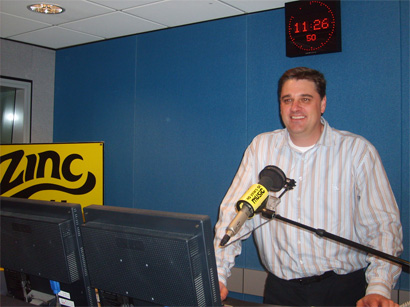Opinion from Peter Saxon
In 2007, when Rob Gamble (pictured) sold his two Sunshine Coast stations to Prime Media for $33.5 million, he was a happy man. He could be the last person ever to make a profit from the sale of a radio licence.
At the time, the Gamble family’s FM stations, Zinc 96.1 and Hot 91.1 when added to Prime’s other radio assets in Gladstone / Rockhampton, Cairns, Mackay and Townsville, brought the value of the company’s radio division to around $77 million.
Now, in 2013, after a protracted negotiation, they sold the lot to the Cameron family’s Grant Broadcasters for just $24.525 million – a third of its value just six years ago. It’s true that negotiators don’t come much tougher than the Camerons. They don’t like to overpay for anything which is probably why they tend not to win licence auctions when there are other interested parties to outbid them.
By contrast, the old DMG never lost a licence auction while building its capital city station network. Over almost a decade it cost them around $700 million just for the pieces of paper to allow them to invest further in studios and equipment. Yet Lachlan Murdoch was able to pick up the lot for somewhere south of $240 million over a period between 2009 and 2012.
It’s true that the radio business isn’t the licence to print money that it used to be. The advertising market hasn’t fully recovered since the GFC. And even though radio has proven more resilient than other main media, long term forward bookings are becoming rare while competition with new media becoming tougher.
On top of all of those factors, when in February this year, Prime reported an overall profit fall of 71%, prompting it to write down the value of its radio licences by $15 million, its CEO Ian Audsley said it reflected the uncertainty in the regional Queensland radio market due to the “lingering effects of three natural disasters in the past two years.”
In reality, it is unlikely that radio revenue will ever be earned in the same way it was six years ago, at least not on the old business model that existed back then. Advertisers aren’t buying schedules of spots any more. Integration on multi-media platforms is what they want. Happily, radio is in a good strategic position to deliver what they want and create a new business model for the future.
Not that radio was ever complacent, but it was a more comfortable existence operating under the protection of a licence that only once in a blue moon allowed a new competitor into its broadcasting club.
Plainly the value of that protection is diminishing at a rapid rate. If Prime and DMG could lose two thirds or more of the value of their licences in just six years, then how long before they lose the rest?
Having paid $24.5 and $240 million respectively, the Camerons and Mr Murdoch obviously believe there’s still plenty of good years left before licence values reach zero. Or even if they do, there’ll still be enough goodwill in the business to justify the purchase price.
Nonetheless, if commercial radio will ever again be said to “print money,” it won’t be licenced to do so.

Peter Saxon

